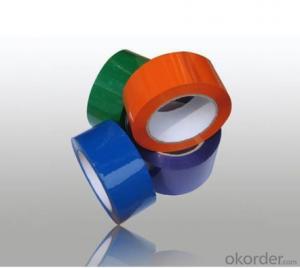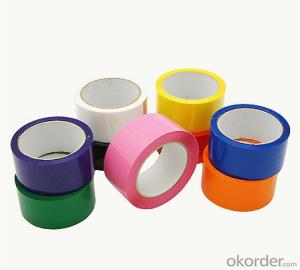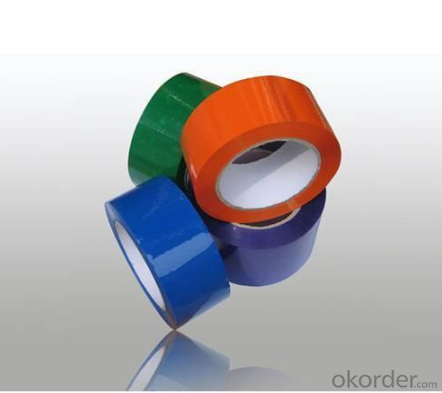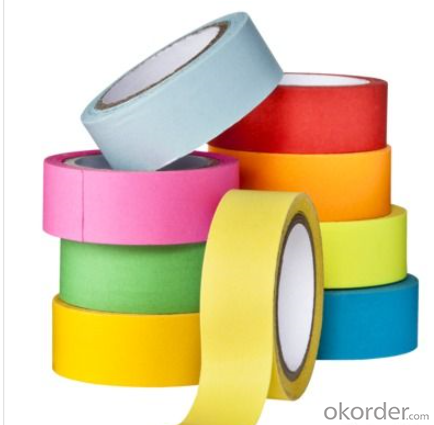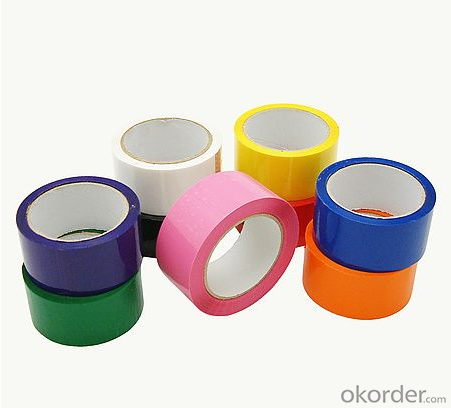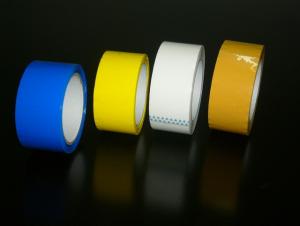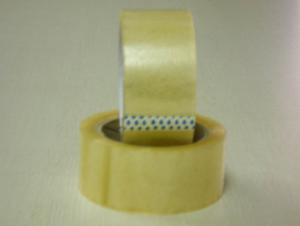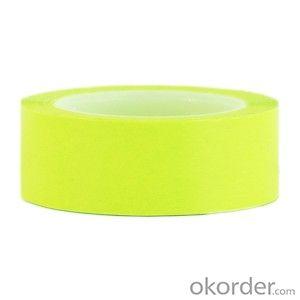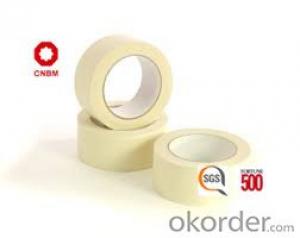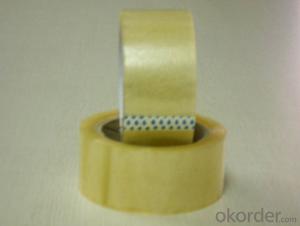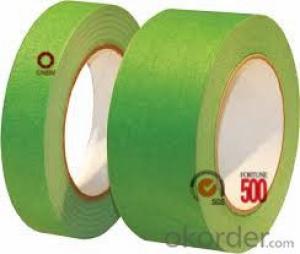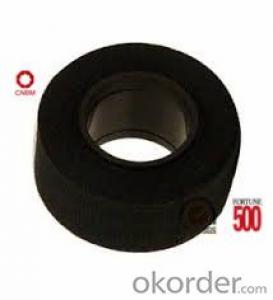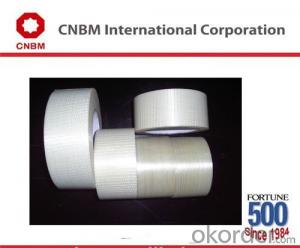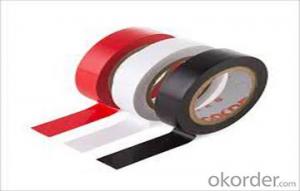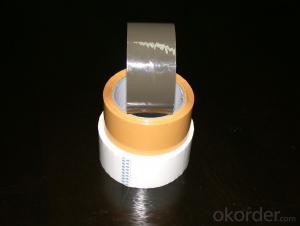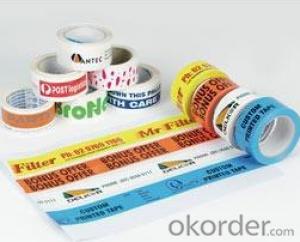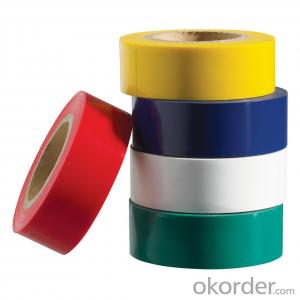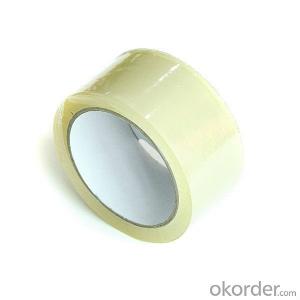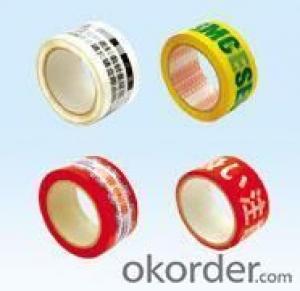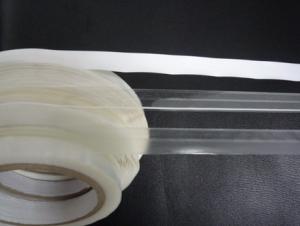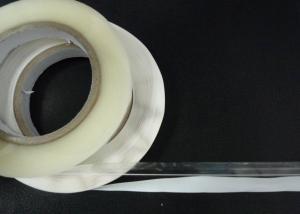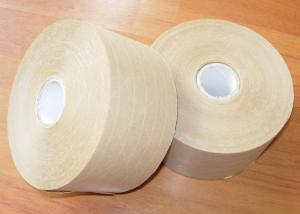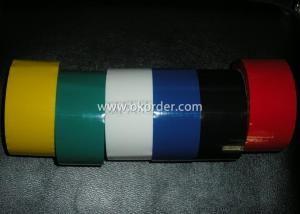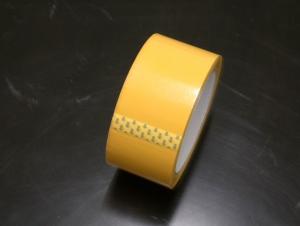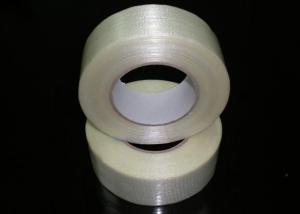OPP Packaging Tape Malaysia - Cloth Tapes Pressure and Printing
- Loading Port:
- Tianjin
- Payment Terms:
- TT OR LC
- Min Order Qty:
- 1000 roll
- Supply Capability:
- 500000 roll/month
OKorder Service Pledge
OKorder Financial Service
You Might Also Like
1.Product details
| 1.Material: | Thermal compound of polyethylene and gauze fiber |
| 2.Adhesive/Glue: | Hotmelt adhesive and rubber adhesive |
| 3.Other Name: | Duct tape, cloth tape, gaffer tape, fabricbase tape |
| 5.Color : | Red, yellow, blue, green, brown, black, gray, silver etc. |
2.Feature of Cloth Duct Tape
1. High peel force ,high tensile strength,high viscidity,high-temperature resistant.
2. Anti-pull, anti-grease, anti-aging,anti-corrosion,waterproof.
3. Protect the surface from rust, humidity, water as well as easy tear
4.strength adhesive easy to tear, high viscidity, high temperature resistant, damp-proof,skidproof.
3.Applications of Cloth Duct Tape
1.Used for pipes, duct wrapping, heavy bounding and carpet fixing, carton sealing, waterproof packing, protecting
2.Mainly used in heavy and high-value goods packing, cable, telephone lines, following wall protection, avoiding dust for machines, carpets seam joining and dust insulation
3.Frequently used for car industries, electric cabinets and used in where waterproof measures better
4.Company information
Good quality control in production process, ISO9001:2008,SGS.
Excellent quality and Competitive price, OEM is available.
Available in an extensive range of stock or custom size.
The whole process from material to finished products can be traced.
5.Our service
(1)24 hours prompt reply by email or telephone or messenger.
(2)Standard size have stock, immediately delivery once your purchase
(3)10 days delivery containers for out of stock
(4)Can combine containers with multiple insulation products for your different demand
(5)No quantity limit, from 1 rolls to full container, at your choose and demand!
6.product show
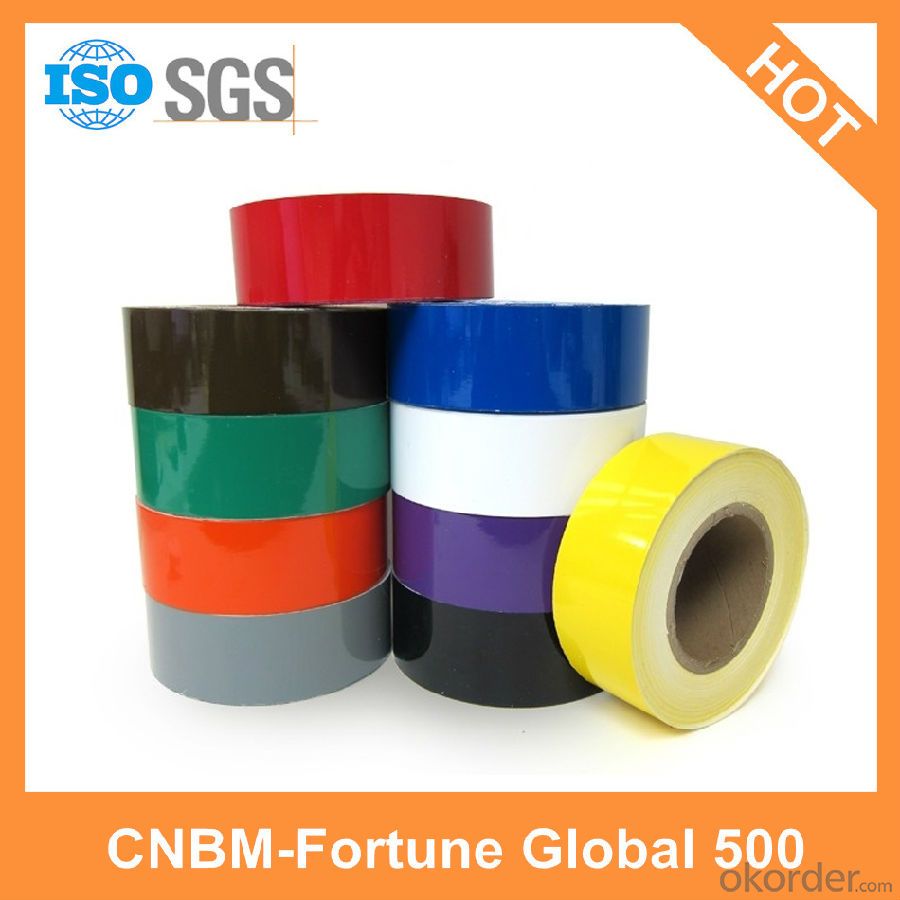
- Q: How do you remove packaging tape without leaving residue?
- To remove packaging tape without leaving residue, you can try using a hairdryer to gently heat the tape. This will help loosen the adhesive, making it easier to peel off without leaving any sticky residue behind. Additionally, using a rubbing alcohol or vinegar solution can help dissolve any stubborn residue that may be left behind. Just apply the solution to a cloth and gently rub the area until the residue is gone.
- Q: Does packaging tape have any specific safety precautions?
- Yes, packaging tape does have some specific safety precautions. It is important to handle packaging tape with care to avoid any injuries. When using packaging tape, it is recommended to keep it away from children and pets as it can pose a choking hazard. Additionally, it is important to use caution while handling sharp tools such as scissors or box cutters when working with packaging tape to prevent accidental cuts.
- Q: Can packaging tape be used for sealing household or kitchen items?
- Certainly! Packaging tape is indeed suitable for sealing household or kitchen items. With its versatility as an adhesive tape, it is widely employed for sealing cardboard boxes. However, it can also serve the purpose of sealing numerous items found in the household or kitchen. Whether you require sealing food containers, plastic bags, or even small appliances, packaging tape guarantees a robust and reliable seal. To optimize its adhesive strength, it is crucial to ensure that the surface is both clean and dry prior to applying the tape.
- Q: Can packaging tape be used for sealing fabric?
- Yes, packaging tape can be used for sealing fabric to some extent. However, it is not the most suitable option for long-term or heavy-duty use. Packaging tape is primarily designed for sealing boxes and packages, so while it may work temporarily on fabric, it may not provide a strong and durable hold. Additionally, packaging tape may leave adhesive residue on the fabric or damage delicate materials. It is recommended to use fabric-specific tapes or adhesive products that are designed for sealing fabric, as they provide better adhesion and are less likely to cause damage.
- Q: Is packaging tape safe to use on painted furniture?
- Yes, packaging tape is generally safe to use on painted furniture. However, it is important to consider a few factors before using it. Firstly, ensure that the paint on the furniture is fully cured or dried, as using tape on fresh paint may cause it to peel off. Additionally, check the type of paint used on the furniture, as some types may be more prone to damage or discoloration from adhesive tape. To be on the safe side, you can test the tape on a small inconspicuous area of the furniture first to see if any damage occurs. It is also recommended to remove the tape carefully and slowly to minimize the risk of any damage.
- Q: What are the considerations for using packaging tape on plastic packaging materials?
- When working with plastic packaging materials and using packaging tape, it is essential to keep several important factors in mind. These factors include: 1. Adhesive Compatibility: Ensuring that the adhesive used in the packaging tape is compatible with the specific type of plastic material is crucial. Different plastics have different surface properties, and they may require different adhesive formulations to ensure proper bonding. For instance, low surface energy plastics like polyethylene may necessitate a tape with a specially designed adhesive for such surfaces. 2. Strength and Durability: Plastic packaging materials come in varying thicknesses and strengths. When choosing packaging tape, it is important to consider the strength and durability required for the specific plastic material being used. The tape should be strong enough to securely hold the packaging together without tearing or breaking, thus maintaining the package's integrity during handling and transportation. 3. Temperature Resistance: Plastic packaging materials can be sensitive to temperature changes. If the package is exposed to extreme temperatures, such as heat or cold, the packaging tape should be capable of withstanding these conditions without losing its adhesive properties. Certain plastic materials may also shrink or expand due to temperature changes, which can impact the tape's adhesion. Therefore, it is important to select a tape suitable for the expected temperature range. 4. Residue and Damage: Some packaging tapes may leave behind adhesive residue or cause damage when removed from plastic packaging materials. This can pose a problem if the packaging needs to be reused or if the plastic material is susceptible to damage. By choosing a packaging tape that is designed to be easily removable or leaves minimal residue, these concerns can be mitigated. 5. Regulatory Compliance: Depending on the industry or product being packaged, there may be specific regulations and standards that must be followed. It is important to ensure that the packaging tape used complies with any applicable regulations, such as food safety standards or environmental requirements. By taking these factors into consideration, one can select the appropriate packaging tape that will effectively adhere to plastic packaging materials while also providing the necessary strength, durability, temperature resistance, and compliance with regulations.
- Q: What are the benefits of using silent packaging tape?
- There are several benefits of using silent packaging tape. Firstly, silent packaging tape provides a noise-free packaging experience. This is particularly beneficial in environments where silence is necessary, such as in offices, libraries, or other quiet spaces. By eliminating the loud noise typically associated with traditional packaging tape, silent tape helps maintain a peaceful and calm atmosphere. Secondly, silent packaging tape is preferred by employees who handle packaging tasks on a regular basis. The absence of noise during the taping process reduces the risk of noise-induced stress or fatigue, contributing to a more comfortable working environment. This can lead to increased productivity and employee satisfaction. Moreover, silent tape is a great option for businesses that prioritize customer satisfaction. When packaging items for shipment, especially fragile or delicate items, using silent tape ensures a professional and polished appearance. The absence of loud noise during the packaging process also avoids potential disturbance or annoyance to customers, both during the packaging phase and when they receive their packages. Additionally, silent packaging tape is often designed with high-quality adhesive properties. This means that it provides a secure and durable seal, keeping packages intact during transit. This reduces the likelihood of damaged goods and the associated costs of re-shipping or replacing items. Lastly, silent tape is often made from eco-friendly materials. This is advantageous for businesses aiming to reduce their environmental impact. By choosing silent packaging tape made from recyclable or biodegradable materials, companies can align their packaging practices with their sustainability goals. In conclusion, the benefits of using silent packaging tape include noise reduction, improved employee satisfaction and productivity, enhanced customer experience, secure sealing, and eco-friendliness. By opting for silent tape, businesses can create a more efficient, pleasant, and environmentally conscious packaging process.
- Q: Can packaging tape be used for sealing plastic shoeboxes?
- Yes, packaging tape can be used for sealing plastic shoeboxes. It provides a strong and secure seal, keeping the contents of the shoeboxes safe and protected.
- Q: Can packaging tape be used for sealing medical or laboratory containers?
- Sealing medical or laboratory containers with packaging tape is not advisable. Although packaging tape can temporarily seal general packaging, it is not intended or tested to meet the precise demands of medical or laboratory settings. To maintain airtight and sterile conditions and prevent contamination or tampering, specialized sealing methods are often required for medical and laboratory containers. These methods may involve using adhesive strips, rubber gaskets, or screw caps that are specifically designed for medical or laboratory applications. It is of utmost importance to adhere to the sealing methods and materials recommended by the manufacturer or industry standards to guarantee the integrity and safety of medical or laboratory containers.
- Q: How do I cut packaging tape without scissors?
- One way to cut packaging tape without scissors is by using your teeth. Simply hold the tape between your fingers and bite down firmly, then pull your head back to tear the tape. Alternatively, you can use a sharp object like a knife or a box cutter to cut the tape by pressing it against the tape and pulling it in a swift motion. However, be cautious when using sharp objects to avoid any injuries.
Send your message to us
OPP Packaging Tape Malaysia - Cloth Tapes Pressure and Printing
- Loading Port:
- Tianjin
- Payment Terms:
- TT OR LC
- Min Order Qty:
- 1000 roll
- Supply Capability:
- 500000 roll/month
OKorder Service Pledge
OKorder Financial Service
Similar products
Hot products
Hot Searches
Related keywords
